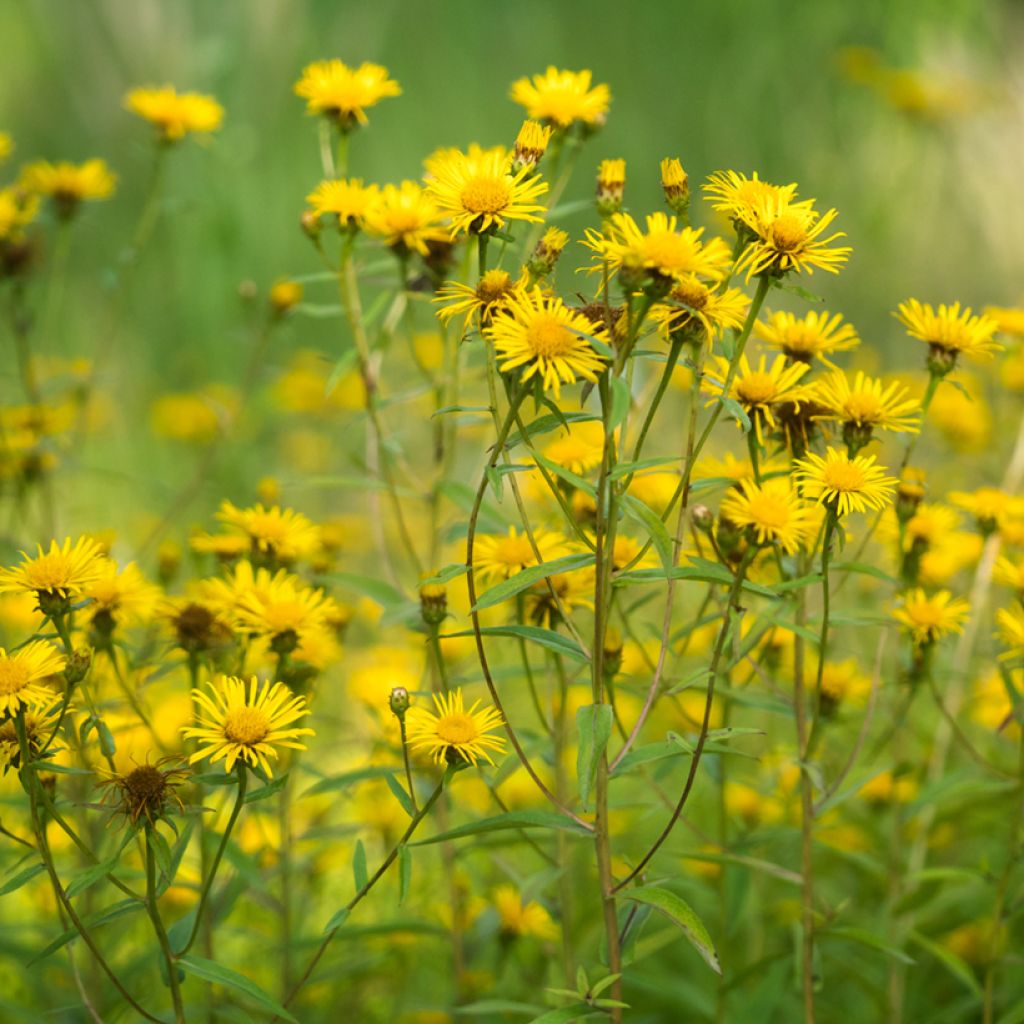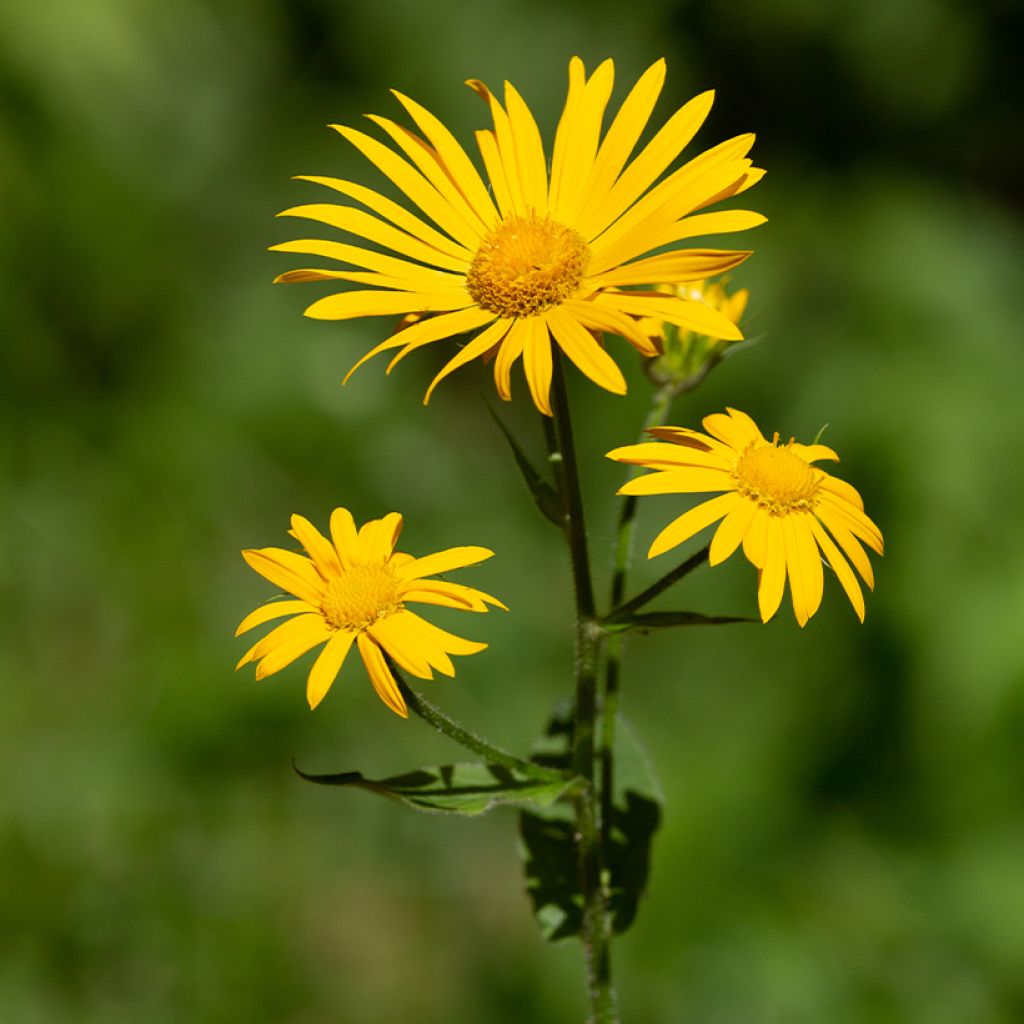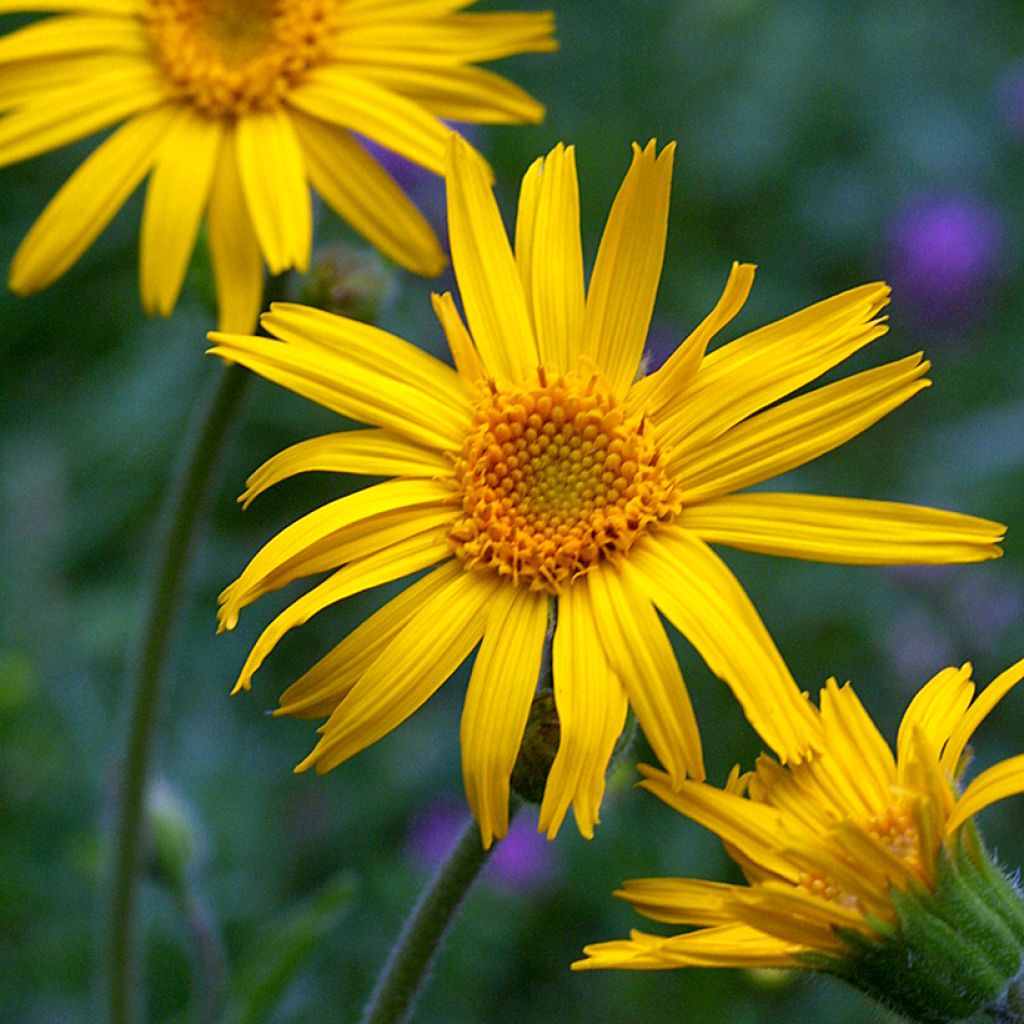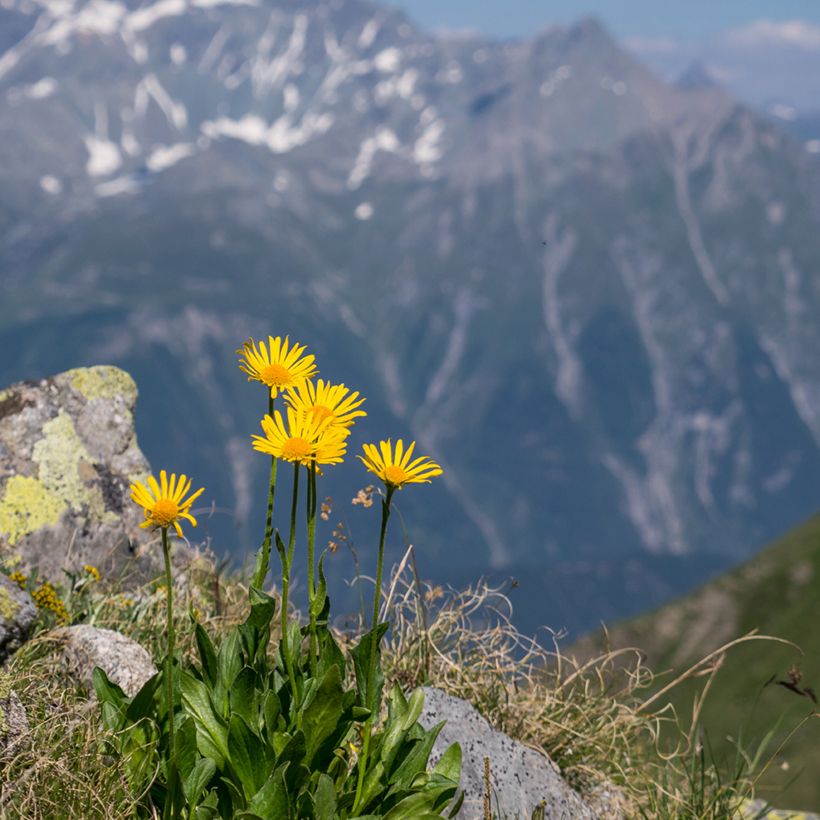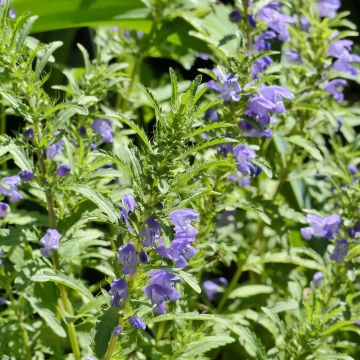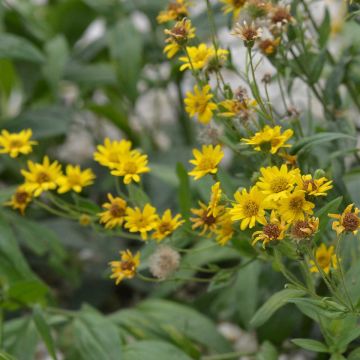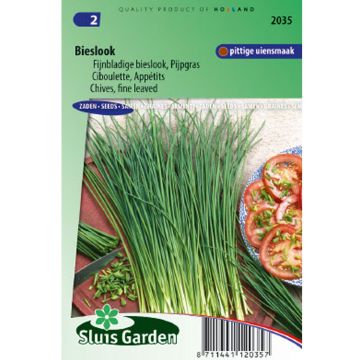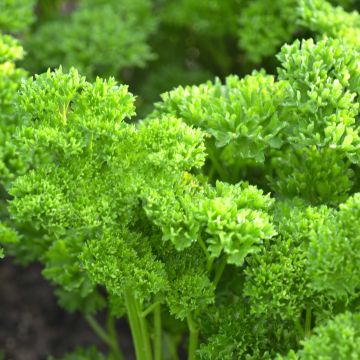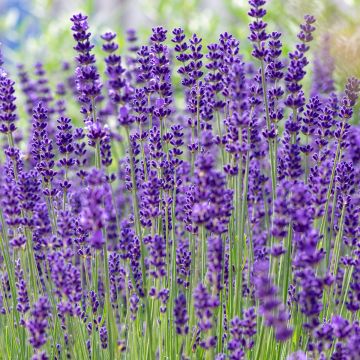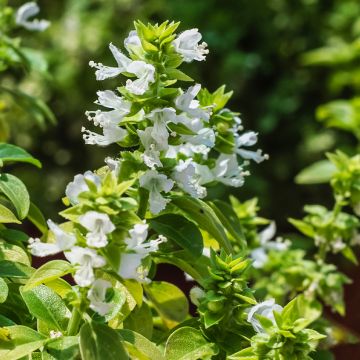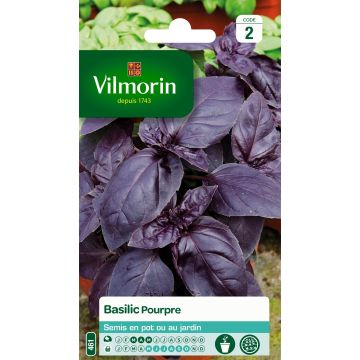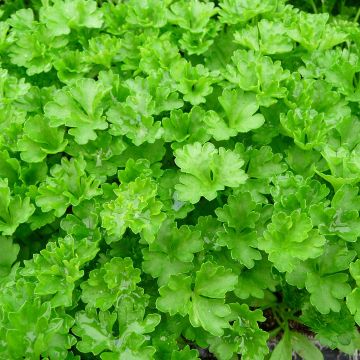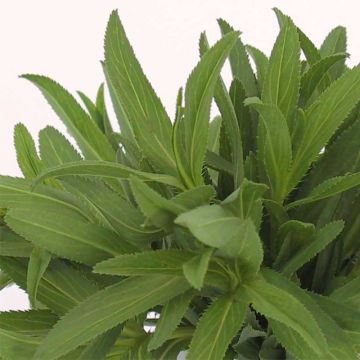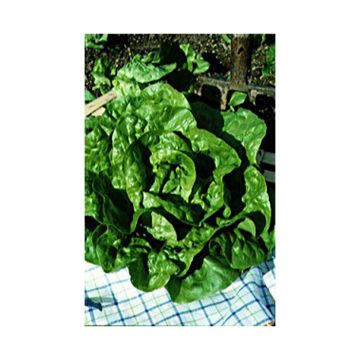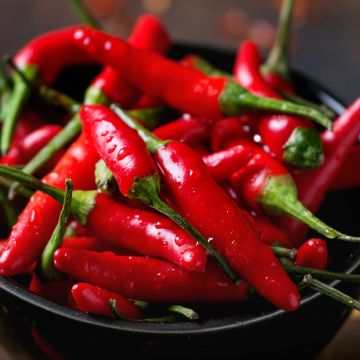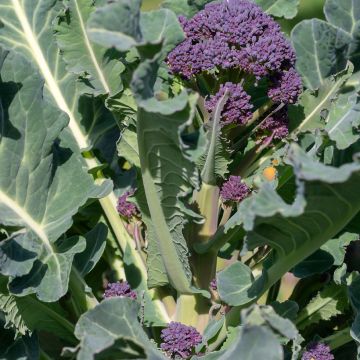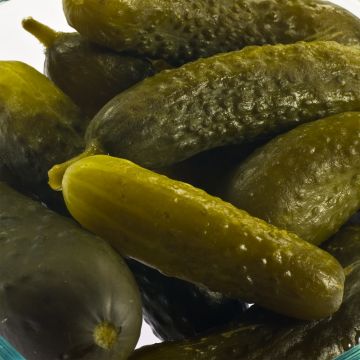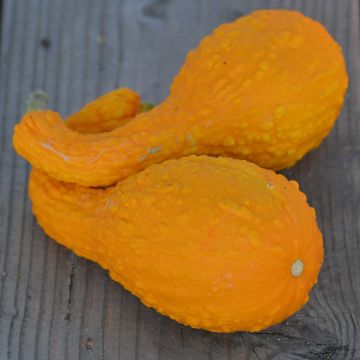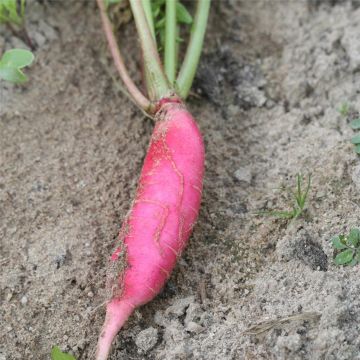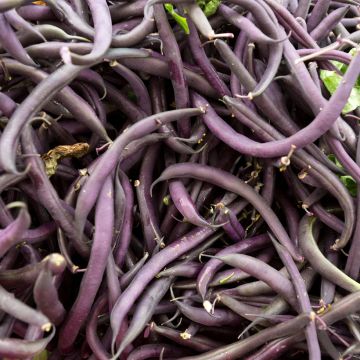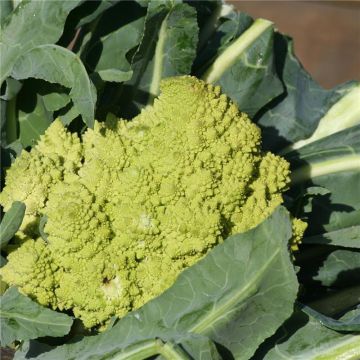Arnica montana, also known as Alpine Plantain, Mountain Arnica or Savoy Tobacco, is a large perennial medicinal plant. It produces yellow flowers in summer, sometimes tinged with orange, which have healing and soothing properties. Sow from February to April, for a harvest between May and July the following year.
Arnica is native to mountainous areas of Europe and southern Russia, belonging to the Asteraceae family. It is an upright plant, reaching about 50 cm in height and 30 cm in width. This deciduous herbaceous perennial has lanceolate leaves arranged in a basal rosette. It flowers from May to August depending on the region, with yellow heads of 6 to 8 cm, sometimes slightly orange. It is very hardy and withstands temperatures down to -15°C.
Arnica has been used in medicine since ancient times for its healing and soothing properties, hence its nickname Falls Herb. Used externally, in the form of tincture or decoction, it treats bruises, contusions, and insect bites. However, it should be reserved for external use only, as it can be toxic. Arnica is also widely used in homoeopathy.
In the garden, Arnica montana prefers a sunny location, in light, ordinary, or even poor and slightly acidic soil. It can be planted alongside other medicinal plants like Chamomile or Calendula, as well as in sunny rockeries due to its ornamental character.
Alpine Plantain is sometimes abundant in the wild, but its picking is restricted.
Harvest: Flower heads are harvested from May to July.
Storage: Leaves and flowers can be kept after drying, in a dark, dry place, in airtight containers.
Gardener's Tip: Once well established in your garden, Arnica can multiply by division. Choose a healthy plant, divide it with a sharp knife, then replant the divided plants.


































